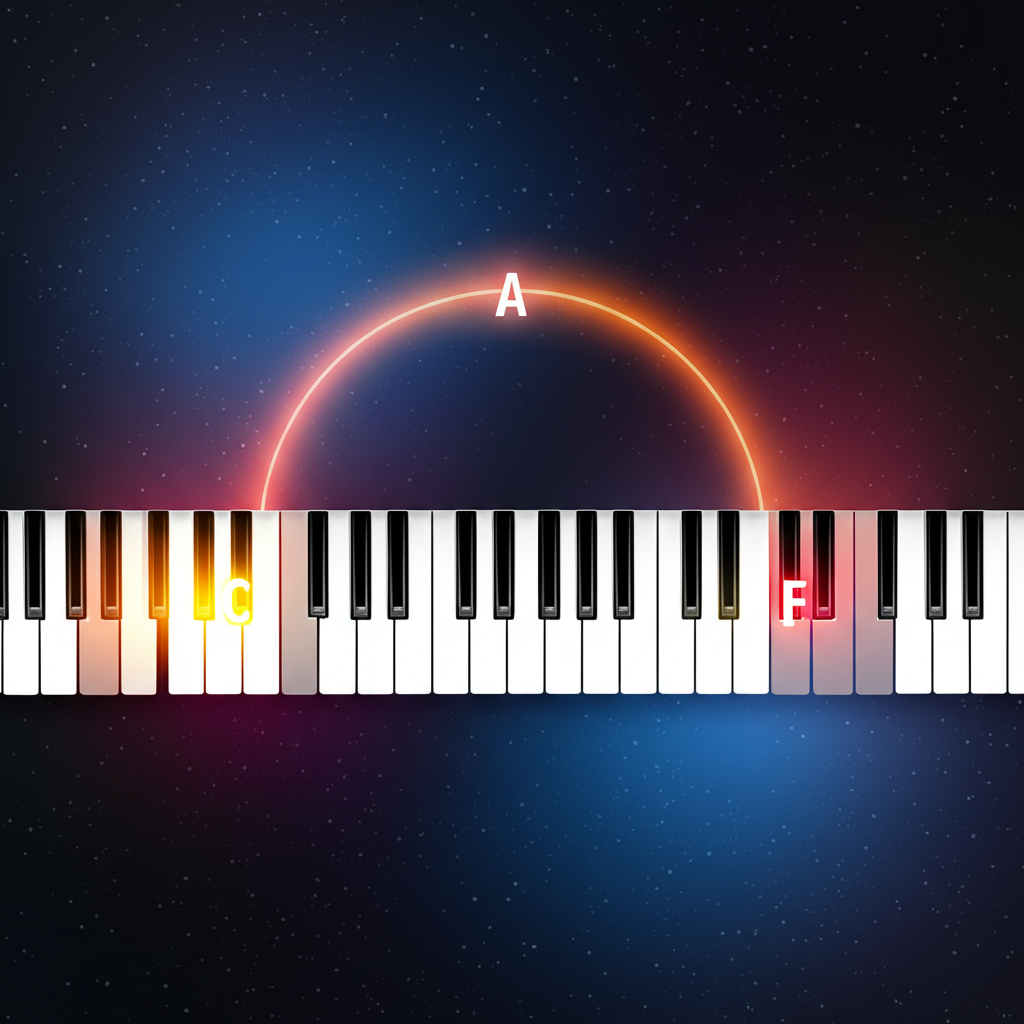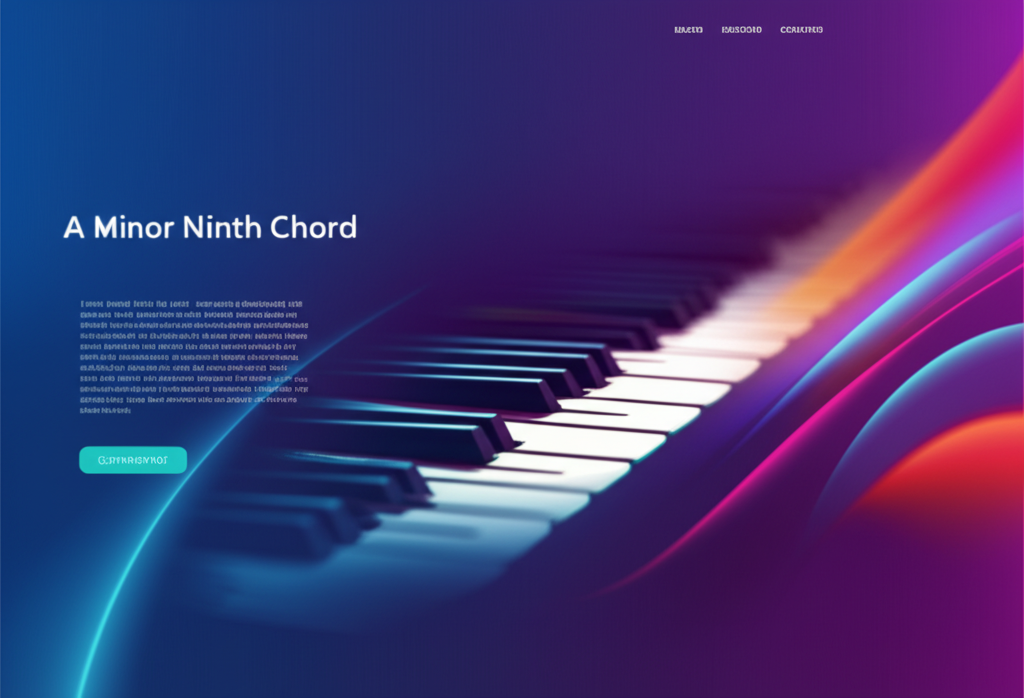
Minor Ninth Interval: Expanding Beyond the Octave

b4n1
June 14, 2025, 7:04 p.m.
Minor Ninth Interval: Expanding Beyond the Octave
Summary:
The minor ninth interval is a compound interval spanning thirteen semitones, equivalent to an octave plus a minor second. This interval creates a distinctive sound that is both dissonant and colorful, playing crucial roles in extended harmony, jazz improvisation, and contemporary composition.
Keywords:
minor ninth, compound interval, extended harmony, jazz theory, interval analysis, chromatic harmony, chord extensions, dissonance
Introduction:
The minor ninth interval represents our first venture into the realm of compound intervals, where we extend beyond the traditional octave boundary. This thirteen-semitone span creates a unique sonic character that is simultaneously familiar and exotic. While it shares the dissonant quality of its simple counterpart, the minor second, the minor ninth possesses a more complex and sophisticated character that has made it invaluable in modern harmony and jazz composition.
Definition and Classification:
A minor ninth interval spans thirteen semitones or one octave plus one semitone. It is the compound equivalent of the minor second interval. The interval can be calculated as: octave (12 semitones) + minor second (1 semitone) = minor ninth (13 semitones). This interval is classified as a dissonant compound interval that requires resolution in traditional harmony.
Interval Properties:
- Span: 13 semitones
- Compound of: Octave + minor second
- Quality: Dissonant but colorful
- Resolution: Typically downward by step
Examples:
Minor Ninth from C:
From C to D♭ an octave higher creates a minor ninth interval:
Minor Ninth Intervals in Different Keys:
Examples of minor ninth intervals starting from various notes:
Harmonic Context and Function:
In extended harmony, the minor ninth interval appears as a chord extension, adding color and sophistication to basic triads and seventh chords. It functions similarly to the minor second but with less harsh dissonance due to the octave separation. The interval is particularly important in jazz harmony, where it appears in dominant ninth chords and creates characteristic tensions.
Resolution Patterns:
The minor ninth typically resolves downward by step:
Practical Applications:
The minor ninth interval is fundamental in jazz chord voicings, particularly in comping and arrangement. It appears in various chord types including dominant ninths, minor ninths, and add9 chords. In classical music, composers use this interval to create sophisticated harmonic colors and to build tension that resolves satisfyingly.
Common Applications:
- Jazz Comping: In extended chord voicings
- Classical Harmony: As suspension and tension
- Contemporary Music: Adding modern harmonic color
- Film Scoring: Creating atmospheric tensions
Melodic Usage:
Melodic Minor Ninth:
When used melodically, the minor ninth creates distinctive angular lines:
Historical Figures:
Bill Evans was masterful in his use of minor ninth intervals, incorporating them into his sophisticated chord voicings with a delicate touch that revealed their beauty. His approach influenced countless jazz pianists in their understanding of extended harmony. Debussy and Ravel, the impressionist composers, explored similar intervallic relationships in their harmonic language, though they approached them from a different theoretical perspective. Modern jazz guitarist Pat Metheny frequently employs minor ninth intervals in both his harmonic and melodic vocabulary.
Interval Recognition:
Ear Training Tips:
- Sound Quality: Like a "soft" minor second with space
- Resolution Tendency: Wants to move down by step
- Harmonic Function: Adds sophisticated color
- Common Reference: The "floating" quality of extended harmony
Fun Facts:
The minor ninth interval is sometimes called the "jazz interval" because of its prominence in jazz harmony and improvisation. Interestingly, while the minor second (its simple equivalent) is considered one of the most dissonant intervals, the minor ninth is often perceived as quite beautiful and sophisticated. This demonstrates how octave displacement can dramatically change our perception of intervallic relationships. Many guitarists discover minor ninth intervals naturally through extended chord shapes before understanding their theoretical construction.
Contemporary Usage:
Modern Applications:
In contemporary music, minor ninth intervals appear in various contexts:
Conclusions:
The minor ninth interval represents a crucial bridge between traditional diatonic harmony and extended modern harmony. Its unique combination of dissonance and sophistication makes it an essential tool for any musician seeking to understand and use advanced harmonic concepts. Whether appearing in jazz chord progressions, classical compositions, or contemporary arrangements, the minor ninth interval continues to provide composers and performers with a powerful means of expression. Understanding this interval is fundamental to grasping the broader concepts of extended harmony and compound intervals that define much of modern musical language.
References:
Evans, Bill. (1961). Sunday at the Village Vanguard. Riverside Records.
Persichetti, Vincent. (1961). Twentieth-Century Harmony. W. W. Norton & Company.
Levine, Mark. (1995). The Jazz Theory Book. Sher Music Co.
Ravel, Maurice. (1899). Pavane for a Dead Princess. Sheet music.




